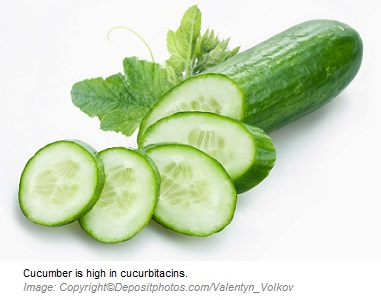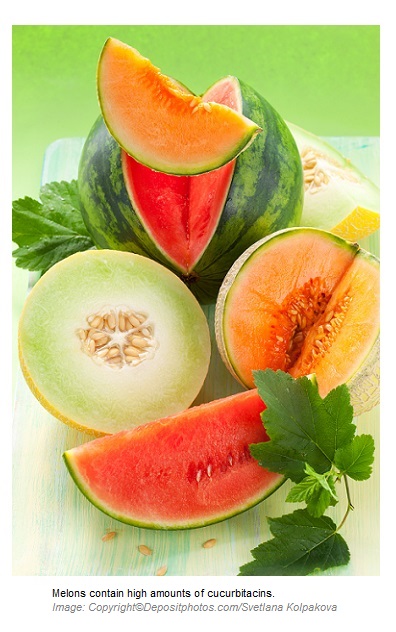Cucurbitacins are naturally occurring triterpenes found in plants, mostly in  Cucurbitaceae family. Being classified as plant steroids, they are toxic alkaloids produced by plants to defend themselves against diseases.
Cucurbitaceae family. Being classified as plant steroids, they are toxic alkaloids produced by plants to defend themselves against diseases.
Subtypes:
There are many subtypes of cucurbitacins, with cucurbitacin A, cucurbitacin B, cucurbitacin C, cucurbitacin D, and cucurbitacin E being the most researched ones.
Food Sources:
Fruits: melons (cantaloupe, honeydew melon, watermelon, winter melon, and canary melon).
Vegetables: cucumber, gourds, luffa (Chinese okra), pumpkin, and squash.
Health Benefits:
- They are potent cathartics and laxatives.
- May have anti-cancer activities.
- Possess anti-inflammatory and analgesic effects.
- Show antibacterial and anthelmintic properties.
- Have hepatoprotective, cardioprotective, and anti-diabetic effects.


